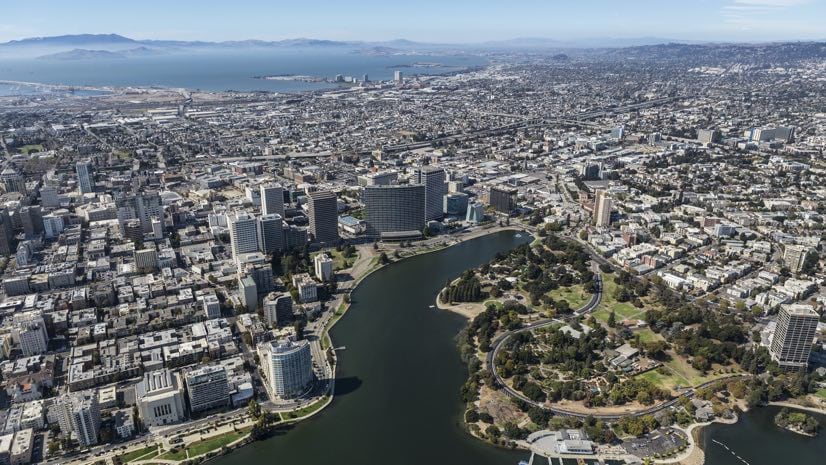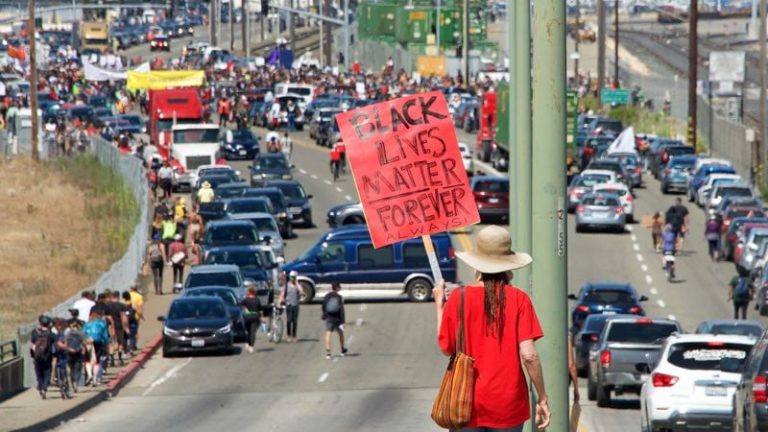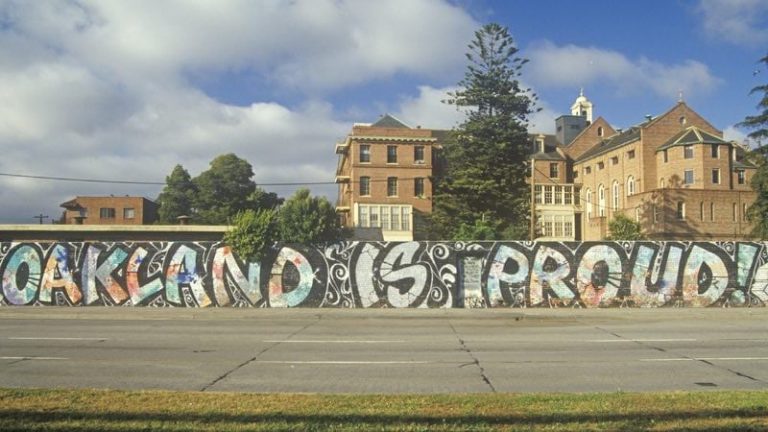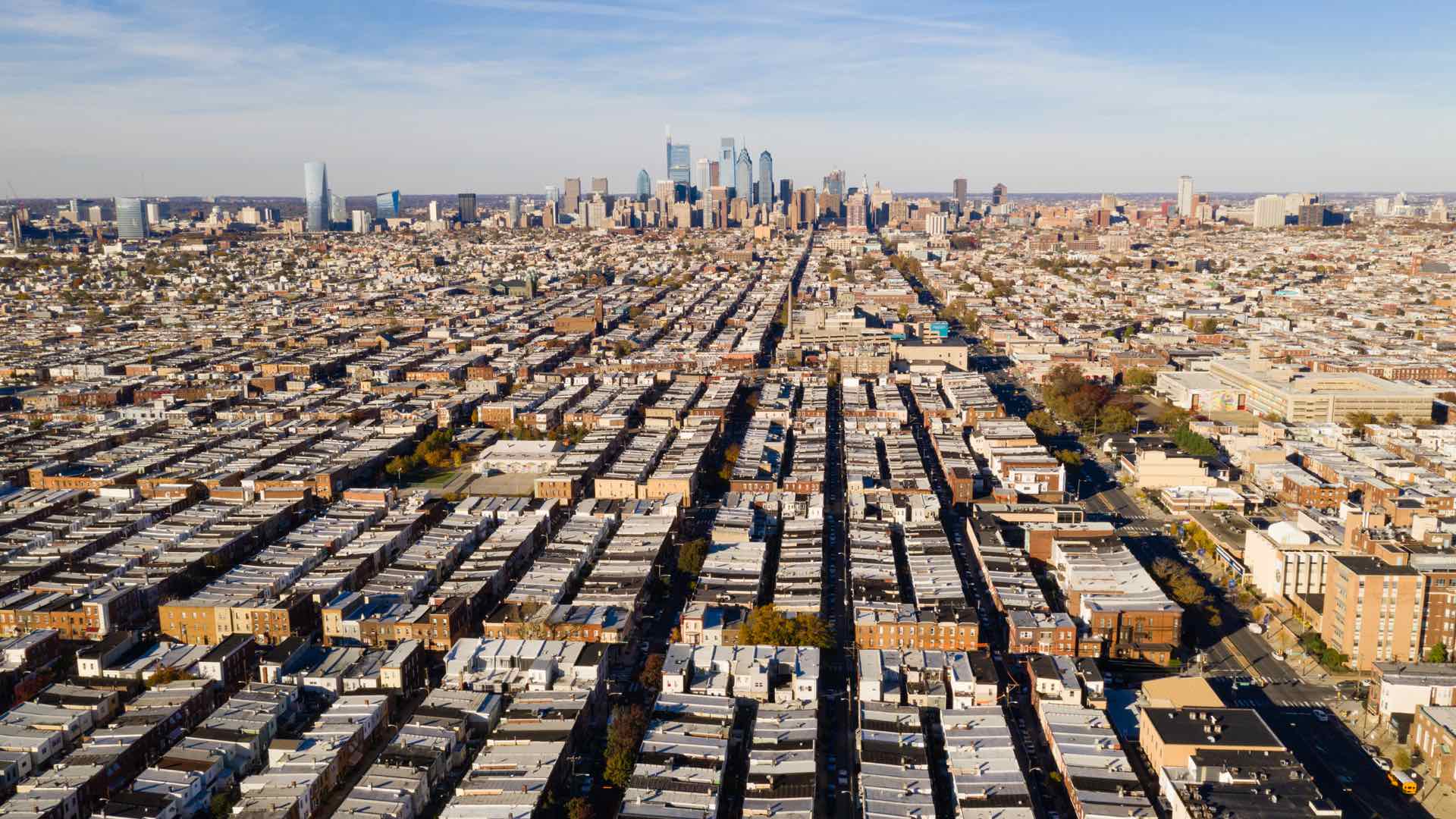

October 13, 2020

Recently ranked as one of the most racially diverse cities in America, Oakland, California, celebrates and protects its diversity. Yet, like many other major US cities, Oakland has a long history of systemic racial and economic discrimination. In the 1940s, federal and local government policies destroyed traditionally diverse neighborhoods and segregated the population.
True to their reputation, Oaklanders fought back. Oakland was one of six cities that led a general strike in December 1946, resulting in the modern labor movement. Community groups born in the 1960s—including the Black Panther Party, Oakland Community Organizations (PICO/OCO), The Unity Council, and Intertribal Friendship House—demanded protection and equal access to jobs, housing, employment, transportation, and services.
Oakland continues the fight for racial equity today. In 2015, it became the first city in California to start a Department of Race & Equity, focused on creating a community where diversity is not just maintained but celebrated, racial disparities are identified and eliminated, and equity is achieved. To reach these goals, the Department of Race and Equity is using innovative tools and technologies including a geographic information system (GIS) to help every City of Oakland department ensure that the work they’re doing advances racial equity.
The Department of Race & Equity is a small team of three people led by its director Darlene Flynn. Prior to her move to Oakland in 2016, Flynn helped create the Race and Social Justice Initiative in the City of Seattle’s Office for Civil Rights. That’s where she developed a theory of change that is the backbone of the department’s approach to promoting equity in Oakland. Flynn’s theory starts by acknowledging that race matters, disparities in most indicators of well-being are race driven, and to achieve social justice, barriers must be removed for all racial groups.
The approach focuses on promoting equity as an internal organizing structure with the city proactively working to dismantle long standing and current racial disparities. All departments of the city government have a role to play by examining the outcomes of their policies, practices, and procedures for underserved communities and identifying actions to address the disparities and advance racial equity through individual and collective actions geared to create systemic change. Oakland’s Department of Race and Equity provides the messaging and analysis approach as well as technical tools and support.

One of the tools the Department is using to do this work is location intelligence, the output of a GIS platform. According to Jacque Larrainzar, who worked on Flynn’s team in Seattle and is now an equity program analyst in Oakland, GIS is essential to the work they do since geography has played a huge role in the way racial discrimination and disparities affect Oaklanders. “Structural racism is actually written in our geographies, especially in zoning and planning codes, but also in transportation,” she said.
That’s why, when the Department of Race and Equity was assembled in 2016, one of the first things staff did was secure a grant from City University of New York’s (CUNY) Institute for State and Local Governance for research to understand how racial disparities in Oakland impact its residents. With the support of CUNY, the department analyzed 72 different indicators of well-being and disaggregating the data by race for resources like housing, education, and health care. They used GIS to organize and analyze existing datasets to examine the disparities between the most and least impacted groups by racial disparities across geographies and within six themes associated with the standard of living: economy, education, public health, housing, public safety, and neighborhood and civic life. The output of that work was the 2018 Oakland Equity Indicators Report.

In addition to a published report, the team displayed results on smart maps where stakeholders could easily visualize how and where inequities existed throughout the city in ways that are not immediately apparent with charts and graphs. Larrainzar explained the impact this had on members of the community. “It not only helps people see the disparity but also helps them to think about how to make it better, which I found is really hard for folks because these things are embedded in everything we do. Which makes visualizing disparities something different, hard sometimes. Those visual juxtapositions really help people to see what is invisible, discuss how we can go about changing it, and how implementing certain changes actually promotes equity.”
The results of the Equity Indicators Report were mixed. Oakland scored relatively high in matters of civic engagement, but scores for public safety were dismally low. Overall, the city came out with a score of 33.5 out of a possible 100. The Department staff wasn’t surprised by the results and viewed them as a data baseline to understand how things can improve over time. With that baseline in place, the Department has embarked on some ambitious, equity-focused projects with their city collaborators.
Let’s Bike Oakland!
One of the department’s first projects was a revision of the city’s bike plan, in partnership with the Oakland Department of Transportation (OakDOT). For this endeavor, the team pulled data from public records and used geospatial analysis to identify Oakland’s most vulnerable groups in terms of access to protected bike lanes, public safety, commute times, and road conditions. Then, OakDOT partnered with people of color-led community organizations based in east and west Oakland to ensure that those historically left out of these conversations and impacted by racial disparities were prioritized and heard in the bike planning process via community listening sessions and design workshops. GIS helped the team collect and organize data and prioritize where and when bike lanes would be added based on need.
Equity-Focused Paving Plan
OakDOT just started year two of a three-year equity-focused paving plan guided by the Department of Race & Equity. Larrainzar explained how the team used GIS to determine which streets would get paved during this project and the importance of using an equity-focused approach for projects like this. “When we start talking about implementing equity, GIS is very helpful because we can actually go down to the street level. We looked at how many people traveled on a street. Who lived around that street? What facilities were around that street that provided services for these communities? And we started to get a very clear picture of what streets needed to be prioritized and maintained because we didn’t have enough money to pave the whole city.”
Smart maps generated by GIS also helped gain the support of other residents. The OakDOT team would show residents the condition of their road and the number of residents it served versus some of the higher-priority areas with roads in far worse condition that served 10 to 20 times as many people. Residents throughout the city were able to see the evidence for decision-making in a compelling way.
2030 Equitable Climate Action Plan
Oakland recently passed the city’s new 10-year plan for mitigating and adapting to the climate crisis. The goal was to prioritize the needs of residents most vulnerable to the effects of climate change. In addition to an 18-month community engagement process including workshops, social media, climate equity workdays, an online survey, and town halls, location intelligence was considered heavily in decision-making. Displaying data geographically allowed stakeholders to easily see a correlation between the number of trees in a certain neighborhood and the rate of asthma among residents, for instance.
“You need to be data-driven, and you need to really be based on reality,” Larrainzar said. “A lot of times, governments are very siloed. They tend to work just with the people that work in the city, sometimes even in just one department.”

For the Oakland team, GIS plays a key role in gathering resident feedback so the city’s plans will improve lives.
“We might be experts on this particular field of work, but if we don’t go back to the community and really hear from them whether this is going to be helpful, we might not help them,” Larrainzar said. “We might create something that’s worse for them.”
In March, when COVID-19 started to pose a serious problem, the Department of Race & Equity decided to test a theory that the virus may be impacting people of color more because of the impacts of structural racism. Staff worked with officials in Alameda County to become one of the first counties in the country to track the impact of COVID-19 on different racial groups using GIS.
When they looked at the data on race and geography on maps, it became clear. Eight ZIP codes were inordinately affected by COVID-19, with the Hispanic/Latinx community being the most impacted by far. This information prompted additional social services for those residents as well as the launch of Oakland’s Flex Streets Initiative, which makes it easier for retail stores, restaurants, and other businesses to use larger portions of the sidewalk, parking lanes, and streets for open-air interactions and proper social distancing.
To choose the right locations for Flex Streets and offer the right services for affected residents, the team engaged community feedback through a texting app. All suggestions are inputted into a GIS dashboard where they are displayed on a map and analyzed to find the solutions that best meet the needs of residents.
“I was surprised that I needed street-level understanding of where to put facilities and services and resources based on who was there,” says Larrainzar of what she’s learned during the pandemic. “When I work on data reports, we typically look at blocks, and we leave it there. But really, what I’m finding is that when we’re talking about designing services, you really need to get to that level. And mapping is very helpful for that because if you have the right data linked to those mapping apps, then you can very easily start designing real solutions for the folks who live there.”
After four years, the Department of Race & Equity is seeing clear results. “I tell people the analogy of moving a mountain, like, we are actually moving the mountain,” says Larrainzar.
Oakland’s mayor, council directors, and city staff are taking notice. In each department, people are viewing their efforts in terms of equity—whether it’s planning and zoning, building, public works, trash pickups, street cleaning, park maintenance, or programs for the youth.
The technology supports and even inspires this level of interest, according to Larrainzar. She said: “GIS allows us to connect with folks that have no technical background and to have real policy making discussions from a very different place than if you just went in there and showed them a PowerPoint with all the data and the pie charts.”
Visit Esri’s Racial Equity GIS Hub to view resources that help organizations address racial inequalities.


